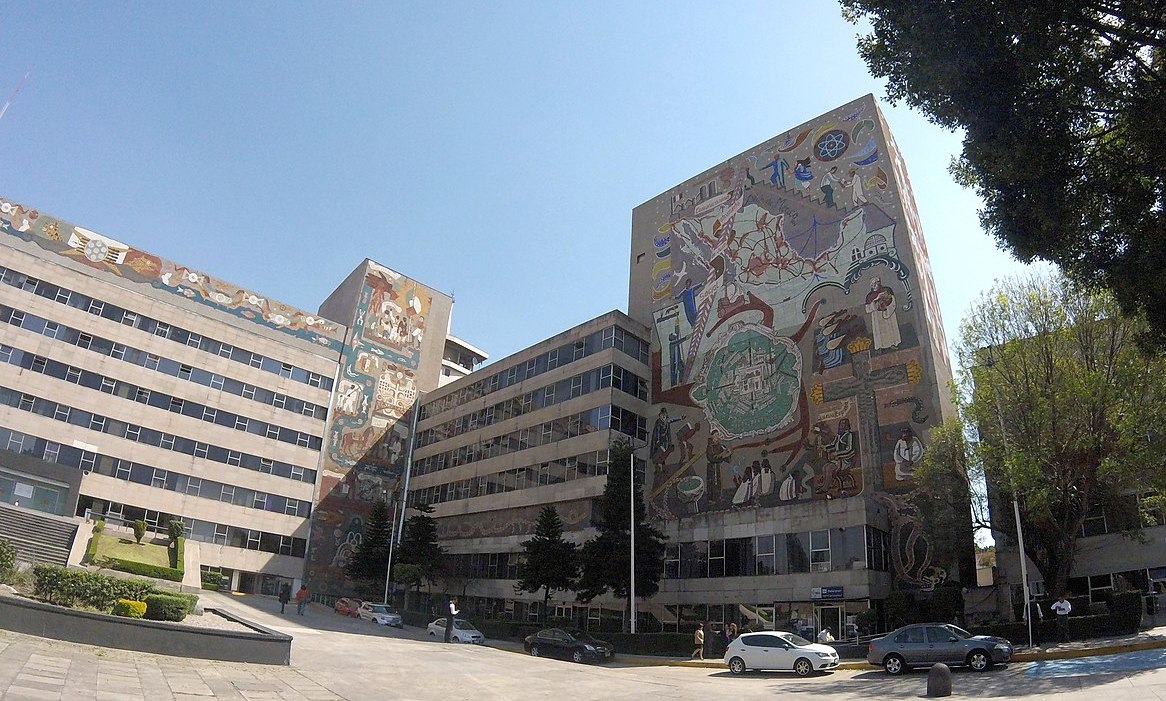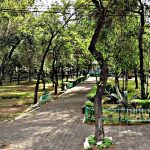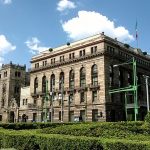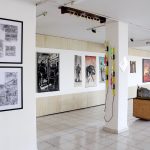
El complejo de la Secretaría de Comunicaciones y Transportes/Centro SCOP se erige como uno de los edificios abandonados más importantes del siglo XX en Ciudad de México, quedó dañado por el sismo de 2017 y antes, en el sismo de 1985 ya había quedado seriamente tocado. Es una zona vallada a lo largo del Eje Central, y por eso también es objeto frecuente de consultas y preguntas.
Dramático, incluso sobrecogedor, casi todo el complejo está cerrado al público. Los edificios históricos se inauguraron en 1952. Herederos del antiguo Palacio de Comunicaciones, el actual MUNAL y la antigua Secretaría Federal de Comunicaciones y Transportes eran un moderno complejo palaciego. Más que eso, solían ser un brillante homenaje al Modernismo. El complejo constaba de una torre de 10 pisos, jardines abiertos, un vivero y viviendas.
Duró hasta 1985. Los dos días de terremotos que se sufrieron en septiembre de ese año derrumbaron la mayoría de los pisos superiores. Demasiado hermosos para ser demolidos, una obra maestra de mediados de siglo.
El complejo fue obra del arquitecto Carlos Lazo Barreiro. Director general del proyecto de construcción de la Ciudad Universitaria, quien ya se había implicado a fondo en el proyecto universitario más importante de América Latina de su época. La investigadora Marisol Martínez señala que pretendía que el Centro SCOP fuera una extensión de ese mismo proyecto.
Para ello, contrató a artistas para que crearan unos 6,000 metros cuadrados de murales. Su trabajo duró 18 meses. Juan O’Gorman es sólo el más destacado de ellos. José Chávez Morado, Francisco Zúñiga y Rodrigo Arenas Betancourt, junto con O’Gorman, realizaron 14 murales en ese corto tiempo. La temprana muerte de Lazo a los 41 años, en 1955, no fue sino la primera tragedia.
Los murales siguen siendo notables. Temáticamente están dedicados a la Secretaría Federal del Trabajo. Pero prevalece la iconografía indígena. Incluso hoy, son legibles y conmovedores. Y los murales convierten al Centro SCOP en casi un centro de peregrinación, al menos para los interesados en la mitad del siglo XX y las obras modernistas producidas en aquel entonces.
Los esfuerzos iniciados tras los terremotos de 2017 han reubicado algunas de ellas. El Instituto de Bellas Artes está supervisando todo. Los planes actuales incluyen restaurar minuciosamente todas ellas. Para el momento en que se realiza este escrito, mayo del 2024, se han tirado ya varios de los edificios. El terreno ejemplar del modernismo nacional se ha convertido en un pueblo fantasma. Seguirán siendo un homenaje al sitio abandonado y a una idea pasada del futuro que una vez imaginaron.
Marisol Martínez, 3 de septiembre de 2021, Local.mx: La historia de la actual Secretaría de Comunicaciones y Transportes, un monumento a la perpetuidad https://local.mx/ciudad-de-mexico/arquitectura/secretaria-comunicaciones-transportes-historia/
 +52 (55) 5723 9300
+52 (55) 5723 9300

Cercano a 0.44 kms.

Cercano a 0.56 kms.

Cercano a 0.63 kms.

One of Mexico City's oldest continuously inhabited little towns . . .

Un sublime estilo renacentista italiano ha recibido a los transeúntes durante casi 120 años. Esto es de lo que se trata.

Una increíble representación en 3D de una de las mayores ciudades del hemisferio.

Uno de los mercados públicos más populares de Eje Central.

Uno de los centros de intercambio artístico más importantes de la zona de Garibaldi.